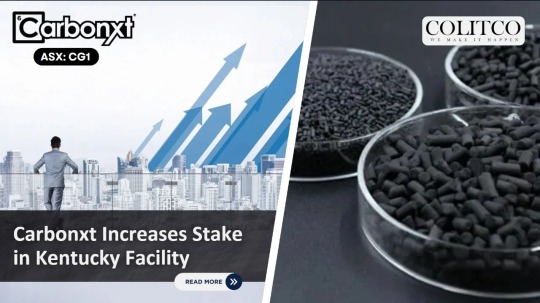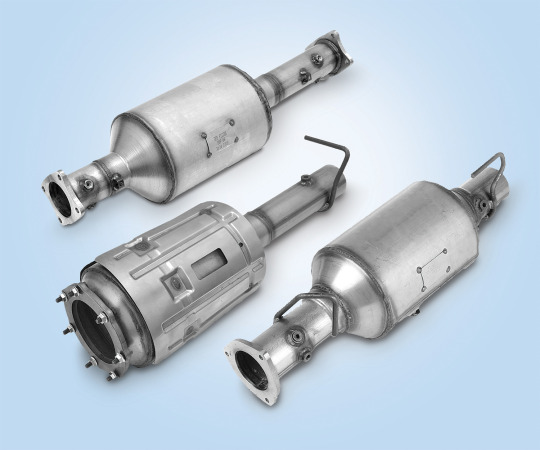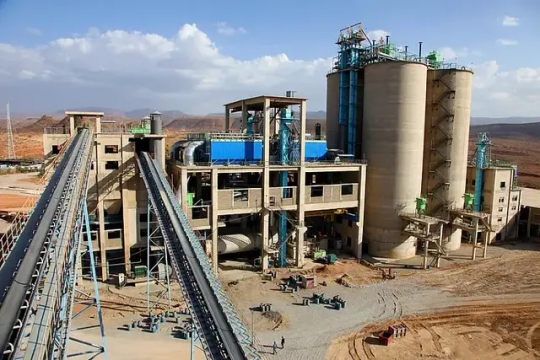#EmissionReduction
Explore tagged Tumblr posts
Text
Key Carbon Emitters and Their Effect on Earth

Addressing climate change starts by pinpointing the top carbon-producing industries, which heavily contribute to greenhouse gas emissions. These sectors account for a significant portion of worldwide CO₂ levels, which drives global warming, severe weather events, and ecosystem disruption. Understanding the biggest carbon-emitting industries is vital for creating effective climate solutions and shifting towards low-carbon technologies.
1. Energy Production At the forefront of CO₂ emission, the energy sector accounts for over 70% of global emissions. Power stations that use coal, oil, and gas to generate electricity and heat release immense amounts of carbon. Transitioning to solar, wind, and hydropower—low-carbon solutions—is crucial to reduce the sector's impact.
2. Transport
Transport is among the largest carbon-emitting sectors, with road vehicles, airplanes, ships, and trains using fossil fuels for movement. Cars and trucks contribute the most. The growing use of electric vehicles and environmentally-friendly public transport offer a pathway to cleaner transport.
3. Manufacturing & Industry
Heavy industries, such as cement, steel, and chemicals manufacturing, create a major share of emissions. Cement production alone produces approximately 8% of the global CO₂. Cleaner industrial processes and energy-efficient methods are crucial for cutting emissions in this sector.
4. Agriculture
Although not historically high in CO₂, agriculture plays a significant role via deforestation, changes in land usage, and the utilization of fossil-fuel-powered equipment and fertilizers. Sustainable farming methods and forest restoration are vital to lower emissions.
5. Construction
Closely connected to manufacturing, the construction industry depends on carbon-intensive materials and equipment. More sustainable building designs and the use of low-carbon technologies can minimize its environmental impact.
6. Forestry & Land Use
Deforestation not only eliminates essential carbon sinks but also releases stored CO₂. This sector stays one of the biggest sources of carbon emissions because a lot of land is cleared for farming and growth.
7. Mining
Extracting fossil fuels and minerals is energy-intensive and damages ecosystems. Sustainable mining practices and operations powered by renewables offer more eco-friendly alternatives.
8. Waste Management
Poor waste management and landfills release harmful gases like CO₂ and methane into the air. Better recycling and composting can help lower these emissions a lot.
9. Buildings
Energy consumption in homes and workplaces—particularly for heating and cooling—makes this one of the top CO₂-emitting sectors. Upgrading with energy-efficient systems can greatly help.
10. Fashion
Often disregarded, the fashion sector contributes to emissions through manufacturing, transportation, and waste. Eco-friendly materials and ethical production can assist in curbing its effects.
#ClimateChange#CarbonEmissions#Sustainability#GreenEnergy#LowCarbon#NetZero#ClimateAction#CO2Reduction#GlobalWarming#CleanTech#EcoFriendly#Renewables#SustainableLiving#Decarbonization#EmissionReduction
2 notes
·
View notes
Text
Carbonxt Increases Stake in Kentucky Plant Ahead of Production
Strategic Expansion to Fuel Clean Technology Production
Carbonxt, a clean tech innovator, is making waves in the environmental sector by increasing its stake in a key Kentucky-based production facility. As the demand for emission-reducing technologies continues to rise, this move places Carbonxt in a strategic position to accelerate manufacturing and meet market demand efficiently.

The Kentucky plant is designed to play a critical role in producing Carbonxt's patented Activated Carbon (AC) products used to reduce harmful emissions from industrial activities. By bolstering its share in the facility, Carbonxt ensures tighter control over quality, scalability, and cost-efficiency.
This decision comes at a time when industries are aggressively pursuing sustainable practices to comply with global emission mandates. The increased investment reflects Carbonxt’s long-term vision to scale up while reducing reliance on outsourced production.
With production scheduled to ramp up shortly, the Kentucky site is expected to become a cornerstone in the company’s U.S. operations. The site also holds significance for the state’s economic development initiatives, aiming to attract green tech businesses.
#EnvironmentalImpact#GreenBusiness#ProductionExpansion#EmissionReduction#CommunityEngagement#RuralDevelopment#SmartFactories#CleanTechInnovation
0 notes
Text
#CarbonSequestration#CarbonCapture#ClimateSolutions#NetZeroEmissions#CarbonStorage#CCS#CleanEnergyFuture#GreenTechnology#EmissionReduction#ClimateAction#SustainableDevelopment#CarbonNeutral#EnvironmentalInnovation
0 notes
Text
Tech Trends Driving the Carbon Footprint Market
The global carbon footprint management market size is expected to reach USD 20.44 billion by 2030, according to a new report by Grand View Research, Inc. The market is expected to expand at a CAGR of 9.2% from 2023 to 2030. The market drivers influencing carbon footprint management market considerations are multifaceted and include a combination of regulatory policies, consumer demand for sustainable products and services, corporate sustainability goals, and growing investor interest in environmentally responsible investments.

Government regulations and international agreements, such as the Paris Agreement, set emission reduction targets and impose penalties for non-compliance, incentivizing businesses to adopt greener practices. Rising awareness of clean energy across the industrial sector and availability of energy-saving certificates in developed countries such as the U.S. and regions such as the European Union are expected to boost the demand for waste heat recovery systems over the forecast period. The supportive policies in countries such as China, India, Japan, and Australia are expected to boost the market growth in Asia Pacific over the forecast period.
Moreover, the development of EU and Emissions Performance Standard (EPS) has majorly propelled the carbon footprint management technology penetration in the market. The provision of a cap-and-trade system, which puts a price on carbon emissions is stimulating CCS installations across several industries such as power generation, chemical processing, oil & gas, iron & steel, and others.
Carbon footprint management market is a fragmented market where many companies such as ENGIE, IsoMetrix, SAPaccount for significant market share in the market in 2022. These companies apart from upgrading carbon management solutions are also focusing on various strategic initiatives including partnership, new launches, collaborations and expansion.
Carbon Footprint Management Market Report Highlights
Cloud emerged as fastest growing deployment type in the global market with CAGR of 12.0% over the forecast period. One of the primary reasons for the growth of cloud segment are remote access and affordability to the end-users.
Enterprise tier has the largest market share in the end-use segment in the market with 39.50% of the market in 2023. As concerns about climate change and its impacts continue to grow, organizations are implementing emissions control and tracking systems in manufacturing or power generation facilities are large scale.
Energy and Utilities accounted for largest market share in the phase system segment in the market with 31.91% of the market in 2023. The power sector accounted for two-thirds of the emissions growth from the previous year. Due to high emission rates, carbon capture & storage potential is extremely high in coal-fired power plants which is expected to propel the demand for carbon footprint management solution in near future.
As of 2023, the Asia Pacific accounted for 57.01% revenue share in the overall market. Government initiatives by major countries like China, India, Japan and Australia to track and reduce carbon emissions is expected to drive the market over forecast period.
Various strategic initiatives were recorded over the past few years to boost the growth of the market. For instance, in May 2023, SAP launched Green ledger solution to tackle carbon footprint management like tracking of carbon in the daily operations.
Request a free sample copy or view report summary: Carbon Footprint Management Market Report
#CarbonFootprint#CarbonManagement#CarbonTracking#EmissionReduction#CarbonAccounting#CarbonFootprintSolutions#CarbonMonitoring#CarbonReporting
0 notes
Text
Ways to Build a Low-Carbon Business: Strategies for Sustainable Success
Transitioning to a low-carbon business model is a key aspect of sustainable business transformation. It is a strategic approach to reducing environmental impact and ensuring long-term sustainability. Companies that adopt carbon reduction strategies can improve brand reputation, comply with regulations, and achieve cost savings. [1]
Here are 10 several strategies to guide your business:
1. Assess Carbon Footprint
Understanding your business's carbon footprint is the first step in reducing emissions. A comprehensive assessment helps identify key sources of greenhouse gases and areas for improvement.
Measure emissions across operations.
Use standardized tools like the Greenhouse Gas Protocol.
2. Set Emission Targets
Setting clear and realistic emission targets allows businesses to track progress and stay accountable.
Define measurable goals for carbon reduction.
Align with global standards such as the Paris Agreement.
3. Improve Energy Efficiency
Reducing energy consumption is one of the most effective ways to lower carbon emissions. Businesses can implement several measures to optimize energy use.
Upgrade to energy-efficient lighting and equipment.
Conduct regular maintenance for optimal performance.
4. Adopt Renewable Energy
Transitioning to renewable energy sources can significantly cut carbon emissions and reduce reliance on fossil fuels.
Invest in solar, wind, or hydroelectric power.
Purchase green energy from certified suppliers.
5. Use Sustainable Materials
Choosing sustainable materials reduces waste and minimizes environmental impact. Businesses should consider eco-friendly alternatives wherever possible.
Choose recyclable and eco-friendly materials.
Apply circular economy principles to reduce waste.
6. Optimize Supply Chain
A sustainable supply chain helps reduce emissions throughout production and distribution.
Source materials locally to reduce transportation emissions.
Partner with suppliers committed to sustainability.
7. Promote Sustainable Culture
Creating a culture of sustainability within the organization encourages employees to participate in carbon reduction efforts.
Educate employees on sustainability practices.
Encourage energy conservation and waste reduction.
8. Implement Smart Technology
Technological advancements can support energy efficiency and emission reductions. Businesses should also explore eco-friendly business strategies to enhance their operations.
Use digital tools to monitor and reduce energy consumption.
Explore emerging technologies for sustainability.
9. Offset Remaining Emissions
Even after implementing reduction strategies, some emissions may still be unavoidable. Carbon offsetting provides a way to counterbalance these emissions.
Support projects like reforestation or renewable energy initiatives.
Prioritize emission reduction before offsetting.
10. Track and Report Progress
Continuous monitoring and transparent reporting help businesses stay accountable and improve sustainability efforts over time.
Monitor and analyze carbon reduction efforts.
Use frameworks like GRI for transparent reporting.
Key Takeaways
Achieving sustainable business transformation requires businesses to assess their carbon footprint, set emission targets, and implement effective carbon reduction methods. Strategies such as improving energy efficiency, adopting green business practices, and optimizing supply chains contribute significantly to sustainability efforts. Additionally, integrating smart technology and offsetting unavoidable emissions can further enhance carbon reduction. Regular tracking and transparent reporting are essential to maintaining long-term success.Adopting these strategies requires commitment and a shift in business practices. However, businesses that prioritize carbon reduction benefit from cost savings, regulatory compliance, and improved stakeholder trust.
Visit VUPICO-SDP to learn more about how we help businesses transition to a low-carbon future
Reference:
#LowCarbonBusiness#SustainableBusiness#CarbonFootprint#EmissionReduction#EnergyEfficiency#RenewableEnergy#SustainableMaterials#CircularEconomy#SupplyChainSustainability#SmartTechnology#CarbonOffsetting#SustainabilityCulture#GreenBusiness#SustainabilityReporting#GRIReporting#SustainableFuture#EcoFriendlyBusiness#ClimateAction#SustainableTransformation#VupicoSDP#CostSavings#RegulatoryCompliance
0 notes
Text
Automotive Engine Valve Market - Forecast(2025 - 2031)
“𝐃𝐫𝐢𝐯𝐢𝐧𝐠 𝐈𝐧𝐧𝐨𝐯𝐚𝐭𝐢𝐨𝐧: 𝐓𝐫𝐞𝐧𝐝𝐬 𝐒𝐡𝐚𝐩𝐢𝐧𝐠 𝐭𝐡𝐞 𝐅𝐮𝐭𝐮𝐫𝐞 𝐨𝐟 𝐀𝐮𝐭𝐨𝐦𝐨𝐭𝐢𝐯𝐞 𝐄𝐧𝐠𝐢𝐧𝐞 𝐕𝐚𝐥𝐯𝐞𝐬” | IndustryARC™
The Automotive Engine Valve Market size is estimated to reach $29108.3 million by 2030, growing at a CAGR of 2.50% during the forecast period 2024–2030.
👉 𝑫𝒐𝒘𝒏𝒍𝒐𝒂𝒅 𝑺𝒂𝒎𝒑𝒍𝒆 𝑹𝒆𝒑𝒐𝒓𝒕
𝐊𝐞𝐲 𝐓𝐫𝐞𝐧𝐝𝐬
🔹𝐕𝐚𝐫𝐢𝐚𝐛𝐥𝐞 𝐕𝐚𝐥𝐯𝐞 𝐓𝐢𝐦𝐢𝐧𝐠 (𝐕𝐕𝐓) 𝐓𝐞𝐜𝐡𝐧𝐨𝐥𝐨𝐠𝐲 𝐀𝐝𝐨𝐩𝐭𝐢𝐨𝐧:
Manufacturers are increasingly implementing VVT to enhance engine performance, fuel efficiency, and reduce emissions. VVT allows dynamic adjustment of valve timing based on engine speed and load, optimizing combustion processes.
🔹𝐒𝐡𝐢𝐟𝐭 𝐓𝐨𝐰𝐚𝐫𝐝𝐬 𝐄𝐥𝐞𝐜𝐭𝐫𝐢𝐜 𝐚𝐧𝐝 𝐇𝐲𝐛𝐫𝐢𝐝 𝐕𝐞𝐡𝐢𝐜𝐥𝐞𝐬:
The rise in electric and hybrid vehicle production is influencing valve design, focusing on efficiency and adaptability to different propulsion modes. This includes developing valves that minimize friction and wear in electric drivetrains.
👉 𝑭𝒐𝒓 𝑴𝒐𝒓𝒆 𝑰𝒏𝒇𝒐𝒓𝒎𝒂𝒕𝒊𝒐𝒏
🔹𝐔𝐬𝐞 𝐨𝐟 𝐋𝐢𝐠𝐡𝐭𝐰𝐞𝐢𝐠𝐡𝐭 𝐚𝐧𝐝 𝐇𝐢𝐠𝐡-𝐒𝐭𝐫𝐞𝐧𝐠𝐭𝐡 𝐌𝐚𝐭𝐞𝐫𝐢𝐚𝐥𝐬:
To improve fuel efficiency and engine performance, there’s a growing trend towards using materials like titanium and composites in valve construction. These materials reduce weight while offering excellent strength and heat resistance.
🔹𝐈𝐧𝐭𝐞𝐠𝐫𝐚𝐭𝐢𝐨𝐧 𝐰𝐢𝐭𝐡 𝐀𝐝𝐯𝐚𝐧𝐜𝐞𝐝 𝐃𝐫𝐢𝐯𝐞𝐫-𝐀𝐬𝐬𝐢𝐬𝐭𝐚𝐧𝐜𝐞 𝐒𝐲𝐬𝐭𝐞𝐦𝐬 (𝐀𝐃𝐀𝐒):
As vehicles become more autonomous, engine valves are being designed to work seamlessly with ADAS, adjusting engine performance in real-time to enhance safety and efficiency.
✨ (𝐂𝐫𝐞𝐝𝐢𝐭 𝐂𝐚𝐫𝐝 𝐃𝐢𝐬𝐜𝐨𝐮𝐧𝐭 𝐨𝐟 𝟏𝟎𝟎𝟎$ 𝐨𝐧 𝐚𝐥𝐥 𝐑𝐞𝐩𝐨𝐫𝐭 𝐏𝐮𝐫𝐜𝐡𝐚𝐬𝐞𝐬 | 𝐔𝐬𝐞 𝐂𝐨𝐝𝐞: 𝐅𝐋𝐀𝐓𝟏𝟎𝟎𝟎 𝐚𝐭 𝐜𝐡𝐞𝐜𝐤𝐨𝐮𝐭) 👉 🔗
➡️ 𝐤𝐞𝐲 𝐏𝐥𝐚𝐲𝐞𝐫𝐬 : BorgWarner | Calsonic kansei Motherson Auto Products pvt. ltd | Continental | Delphi | DENSO | Eaton | MAHLE | Ferrea Racing Components | Eminent Engitech Pvt. Ltd. | Renex Valves | Robert Bosch India Limited,Bangalore | Aisin Otomotiv |
#Automotive#EngineValves#Innovation#Sustainability#GreenMobility#AutomotiveIndustry#HybridVehicles#ElectricVehicles#FuelEfficiency#SmartTechnology#VehiclePerformance#EmissionReduction#AdvancedMaterials#ADAS#FutureOfMobility#TechTrends#EngineEfficiency#ManufacturingInnovation#SustainableMobility#MobilitySolutions
0 notes
Text

Pollution Control Equipment
At ASK Enterprise, we offer top-tier pollution control solutions to ensure a cleaner, safer environment. Our products are designed to effectively reduce emissions and protect both your facility and the atmosphere.
Our Product Range: • Scrubber Systems: Efficiently remove gases, vapors, and particulates from exhaust streams, customizable to handle various contaminants. • Ducting Systems: Durable and corrosion-resistant ducting for the safe transportation of pollutants, available in materials like stainless steel and PVC. • Fume Arrester Systems: Capture hazardous fumes and gases, ensuring workplace safety and compliance with environmental standards.
We provide complete solutions that prioritize sustainability and environmental responsibility. Contact us today for more information.
Contact us for best quotation on M: +91 9106892627 For more info visit: https://bit.ly/3TLXyPg
#PollutionControl#ScrubberSystems#DuctingSystems#FumeArrester#EmissionReduction#EnvironmentalProtection#Sustainability#CleanAir#WorkplaceSafety#EcoFriendly#GreenSolutions#AirQuality#ContaminantRemoval#PollutionPrevention#IndustrialSolutions#EnvironmentalCompliance#CleanEnvironment#HazardousFumes#SafeExhaustSystems#EcoFriendlyProducts#EnvironmentalResponsibility
0 notes
Text
Diesel Particulate Filters: Driving Cleaner Emissions
Diesel particulate filters (DPFs) are at the forefront of reducing harmful emissions from diesel engines. With stringent emission norms and the growing demand for diesel-powered vehicles, DPFs are more critical than ever. Learn how these filters are shaping the future of cleaner emissions.
For More Details Click Here

0 notes
Text
Effect Of Pressure Difference Of SCR Denitration Catalyst On Denitration Efficiency
#Denitration#SCRCatalyst#PressureDifference#CatalystTechnology#EnvironmentalScience#IndustrialProcesses#CleanEnergy#EmissionControl#AirQuality#GreenTech#PollutionControl#IndustrialCatalysts#GreenTechnology#SCRTechnology#EmissionReduction#CatalystPerformance
0 notes
Text
Former SBTi Employee Files Complaint with British Charity Watchdog
LONDON — A former employee of the Science-Based Targets Initiative (SBTi) has lodged a formal complaint with the Charity Commission, alleging that the prominent non-profit organization, which is relied upon by some of the world's largest corporations to audit their carbon emission reduction goals, has strayed from its core mission.
The complaint, submitted last month and reviewed by Reuters this week, accuses SBTi's board of trustees of acting "recklessly" in their decision to allow companies to incorporate carbon credits into their emission reduction targets. The former employee argues that this policy shift undermines the organization’s fundamental objective, which is to drive direct reductions in corporate emissions rather than relying on offset mechanisms.
Historically, the SBTi had opposed the use of carbon offsets when setting targets. However, in April, the organization announced a controversial plan to consider incorporating these offsets, a move that was met with significant backlash from its staff. In response to the criticism, the board stated that it would pause any immediate changes to the rules and instead conduct a review of whether to officially adopt carbon offsets. The controversy surrounding this decision also led to the resignation of Luiz Amaral, SBTi's CEO, who stepped down earlier this month, citing unspecified personal reasons.
The complaint, which has been shared with Reuters by the anonymous former employee, alleges that SBTi's trustees violated organizational rules and disregarded expert advice by contemplating the inclusion of carbon credits. The former employee also claims that several board members have connections to the carbon offset industry, raising concerns about potential conflicts of interest. Notably, SBTi is partially funded by the Bezos Earth Fund, established by billionaire Jeff Bezos, which is a significant investor in voluntary carbon markets.
The Charity Commission has not yet commented on whether it will investigate the complaint. If the regulator chooses to pursue an inquiry, potential outcomes could range from removing trustees to appointing interim managers, or, in extreme cases, revoking the charity's status, according to Chris Priestley, a charity law expert at Withers LLP.
Holger Hoffman-Riem, a member of SBTi's technical advisory group, which advises the organization on standards and guidelines, has voiced support for an external review. "An external review would serve the board’s interests by demonstrating compliance with charity law and governance principles," he stated.
SBTi's spokesperson acknowledged receipt of the complaint but declined to comment further until they have reviewed the details themselves. The spokesperson reiterated that the organization currently does not permit the use of carbon offsets in target setting, emphasizing that further details on the consultation process will be provided in due course.
The complaint underscores ongoing debates about the effectiveness and integrity of carbon offsetting as a tool for climate action, highlighting the tension between different approaches to reducing global carbon emissions.
#SBTi#CharityWatchdog#CarbonOffsets#EnvironmentalPolicy#ClimateAction#CharityRegulation#BezosEarthFund#EmissionReduction
0 notes
Video
youtube
Pricing Carbon with Aldyen Donnelly (S01E107 )
#youtube#PricingCarbon#CarbonPricing#ClimateChange#ClimatePolicy#ClimateAction#EmissionReduction#CarbonMarket#CapAndTrade#CarbonTax#RenewableEnergy#ClimatePolicyAnalysis
0 notes
Text
Carbonxt Powers Ahead: Successful SPP Fuels Kentucky Expansion
Strategic Milestone Secured with Shareholder Backing
Carbonxt Group Ltd (ASX: CG1) has taken a significant step forward in its growth trajectory, successfully completing its Share Purchase Plan (SPP). The Company raised an impressive A$739,000 from loyal shareholders, reinforcing market confidence in its strategic direction—particularly its expansion plans in Kentucky, USA.

Strong Support at A$0.06 Per Share
The offer allowed eligible shareholders to invest up to A$30,000 each, with shares priced attractively at A$0.06. The accessible price point and the Company’s promising outlook encouraged strong investor participation, bringing in considerable funds to support future growth.
0 notes
Text
BrainBox Adds AI Advisor to Its Facilities Management Solutions

Move over Google Assistant, Alexa, and Siri. There’s a new digital assistant in town, although you need to be a facilities manager to appreciate it. https://jpmellojr.blogspot.com/2024/03/brainbox-adds-ai-advisor-to-its.html
#AI#VirtualAssistant#FacilitiesManagement#HVAC#EnergyEfficiency#Sustainability#GenerativeAI#AmazonBedrock#BrainboxAI#ARIA#ClimateChange#EmissionReduction
0 notes
Text
youtube
#carbonemission#carbonfootprint#carbon#nature#sustainabledevelopment#smartcity#CarbonFootprint#NeighborhoodSustainability#EnvironmentalImpact#ClimateChange#EnergyConsumption#TransportationEmissions#WasteManagement#WaterUsage#SustainableLiving#GreenNeighborhood#EmissionReduction#CarbonCalculator#EcoFriendlyPractices#LocalEnvironment#CommunitySustainability#Youtube
0 notes
Text

10 Benefits of Regular Vehicle Maintenance
Regular vehicle maintenance is essential for keeping your car running smoothly and efficiently. Here are ten benefits of maintaining your vehicle on a regular basis:
Enhanced Safety: Regular maintenance ensures that all critical components of your vehicle, such as brakes, tires, and lights, are in good working condition, minimizing the risk of accidents and breakdowns.
Improved Performance: Routine maintenance, such as oil changes and air filter replacements, helps maintain your engine's performance and fuel efficiency, ensuring a smoother and more responsive ride.
Extended Lifespan: Proper maintenance can extend the lifespan of your vehicle by preventing premature wear and tear on essential parts, reducing the likelihood of major breakdowns.
Cost Savings: Addressing minor issues through regular maintenance can prevent them from becoming major and expensive repairs, saving you money in the long run.
Better Resale Value: A well-maintained vehicle retains its value better when it comes time to sell or trade it in, making it a more attractive option to potential buyers.
Reduced Emissions: Regular maintenance ensures that your vehicle meets emission standards, reducing its impact on the environment.
Consistent Performance: With regular maintenance, your car's performance remains consistent over time, allowing you to rely on it for daily commuting and long-distance travel.
Decreased Downtime: Preventive maintenance minimizes the likelihood of unexpected breakdowns, reducing downtime and inconvenience.
Warranty Compliance: Regular maintenance may be a requirement to keep your vehicle's warranty valid. Staying up-to-date with scheduled services ensures you don't void any warranty coverage.
Peace of Mind: Knowing that your vehicle is in good condition and well-maintained gives you peace of mind while driving, allowing you to focus on the road and enjoy the journey.
In conclusion, regular vehicle maintenance is a crucial investment that brings numerous benefits, including enhanced safety, improved performance, extended lifespan, cost savings, better resale value, reduced emissions, consistent performance, decreased downtime, warranty compliance, and overall peace of mind. Make sure to follow the manufacturer's recommended maintenance schedule and seek professional assistance from trusted auto service providers for the best results.
#VehicleMaintenance#CarMaintenance#CarCare#CarRepair#AutoMaintenance#CarSafety#CarPerformance#CarLongevity#CostEffective#ResaleValue#EmissionReduction#ConsistentPerformance#PeaceOfMind#AutoService#WarrantyCompliance#RoadSafety#CarLife#RoutineMaintenance#CarHealth#Roadworthy#ReliableRide#AutoCare#CarTips#MaintenanceMatters#Carzii#Carziiin#CarziiWebsite
0 notes
Text
UK's Emission Reductions Lead the Way

A Steady Progress Towards Emission Reductions
Since 1990, the United Kingdom has emerged as a global leader in emission reductions, outpacing other major economies with a remarkable 48% reduction while simultaneously growing its economy by 65%. The UK is resolute in its commitment to achieving its 2030 Nationally Determined Contributions (NDC) and reaching net-zero emissions by 2050. Prime Minister's assurance this morning underscores our commitment to pursuing these goals in a practical and inclusive manner.
The Breakthrough Agenda: Real-World Solutions for a Sustainable Future
The Breakthrough Agenda epitomizes our drive for practical change in the real world. Last week's report demonstrates substantial progress. However, certain industries, such as steel and cement, are lagging behind. Urgent Need for Transformation in High-Emitting Sectors Announcements for nearly emission-free steel plants fall significantly short of the 100 megatonnes required globally by 2030. Similarly, plans for near-zero emission capacity in the cement industry barely reach 6%. Urgent action is imperative to decarbonize these high-emission sectors and align with the Paris Agreement's objectives. This necessitates increased investment in research and development, the expansion of clean technology financing, and the bolstering of the green industry market.
Financial Commitment to Climate Leadership
Financial support plays a pivotal role, with the UK taking the lead by pledging £11.6 billion for climate finance. Additionally, at the G20, the UK made a substantial commitment of £1.62 billion to the Green Climate Fund.
A New £160 Million Package for Developing Nations
In a significant announcement today, the UK has pledged a £160 million package to aid developing countries in their journey towards decarbonization while fostering economic growth. A Coordinated Approach Towards COP28 This funding will facilitate coordinated efforts leading up to COP28, involving initiatives like the Clean Energy Innovation Facility and the Mitigation Action Facility.
Collaborative Efforts for Affordable Clean Technologies
The Breakthrough report's recommendations outline collaborative strategies to make clean technologies more accessible and affordable, particularly in high-emission sectors. Cement and Steel Breakthrough Initiatives Canada is spearheading the development of a 'Cement Breakthrough' initiative, and the UK is set to join this pioneering effort. Additionally, Germany and the UK are co-leading the 'Steel Breakthrough,' endorsed by 31 countries. Making Decarbonizing Steel a Priority The Breakthroughs are working closely with the COP28 Presidency to prioritize decarbonizing the steel industry this year, fostering a global alliance to steer our industries towards a net-zero future. Sources: THX News, Foreign, Commonwealth and Development Office & The Rt Hon Graham Stuart MP. Read the full article
#CementBreakthrough#CleanTechnologiesCollaboration#COP28Initiatives#DecarbonisationUK#EmissionReductions#GreenIndustryMarket#Netzerocommitment#SteelDecarbonization#UKClimateFinance#UKSustainableGrowth
0 notes